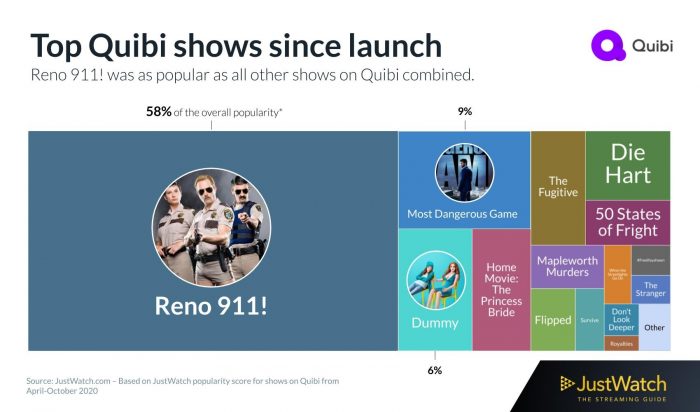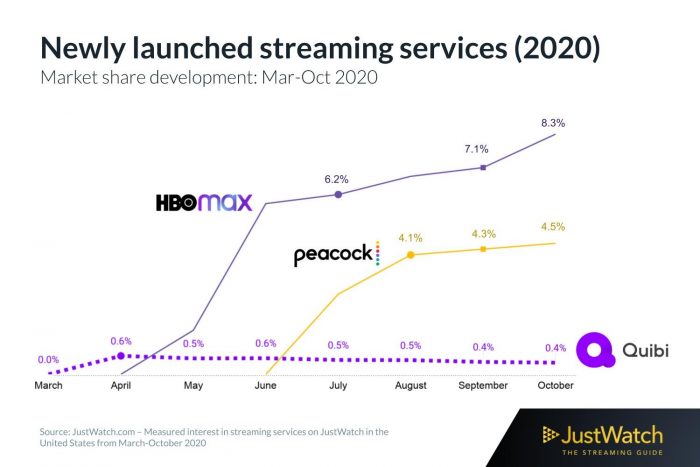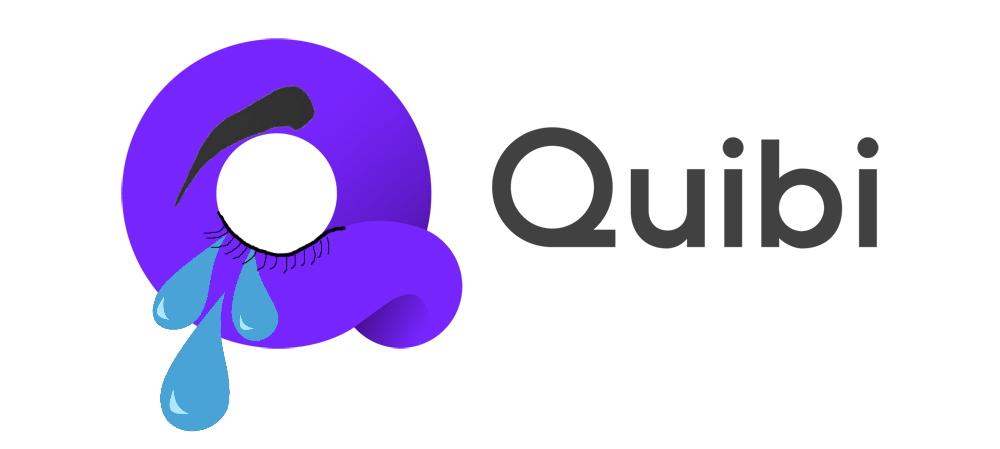Why Quibi failed
The launch and subsequent failure of this supposed Netflix rival tells a poignant story of big money placed in out of touch hands.
It seems like a lifetime ago since Quibi officially launched. In the time since the short video service went live on app stores in April we’ve seen the true fallout from Coronavirus worldwide, the run up to the most heated election in generations, and countless other huge global events. But Quibi’s rise and fall happened in a remarkably short time and, despite its troublesome global backdrop, its failure is not the fault of current events.
It was only six months after launching that Quibi shut down and followed a series of emergency moves by its developers to try and make it work. Nearly $2 billion was invested into the idea and yet many saw it’s failure as inevitable.
So let’s rewind and take a look at what caused Quibi to become such a miserable failure.
The Concept
The idea for Quibi started making the rounds in 2017 when the service’s eventual founder, Jeffery Katzenberg, began raising money for it. The concept was simple: A short video platform that tailors to the binge-watching consumption of modern media consumers whilst appealing to the shorter attention spans of the internet generation.
Essentially; Quibi wanted to provide an alternative to Netflix offering shorter content. Not that bad an idea, you might think. Unfortunately, their adamance that Quibi stick to such a firm format raised eyebrows for many on the outside of the conception.
Quick Bites
The platform had to provide content that was 10 minutes long or less. No longer. That’s the whole shtick; it is a platform for “quick bites”. So when they started developing their own movies, things started to look funky. Feature-length films that had to be watched in 10 minute segments; Quibi thought this was fine.
But they wouldn’t alter the platform for their longer content; they had to still be split into short segments – almost like… a series? But no, they were created as feature length films inevitably leading to jarring and disjointed viewing experiences.
Portable Content
Another USP for Quibi (though, unique failing point may be more apt) was that it was only available on mobile devices. Their reasoning was this: Quibi was designed for the new generation of media consumers who watch things on their smartphones and tablets, who don’t have time to commit to content longer than ten minutes; it was supposed to be forward thinking and cater to a new generation.
What they somehow failed to see, however, is just how constricting a mobile-only platform is. Of course having a mobile companion to Netflix and YouTube drives lots of views, but that is because it is an EXTRA platform to watch on as well – not the sole source of it’s consumption.
Without an existing audience, Quibi made a huge bet on people taking a chance on watching their content solely on their mobile devices. With huge investments in original TV series and – we’re going to bring up this madcap fact again – films, they expected these new users to watch them entirely on their mobile devices.
Sure, it might have been great for catching up on the latest episode during your commute. But what about when you get home then and want to carry on? Sitting on your sofa and squinting at your mobile screen hardly sounds like a top-notch viewing experience, regardless of how high definition mobile screens are now.
How Original
Quibi wanted to create an entirely new block of content. They didn’t want to worry about licensing existing material and competing with other platforms over the same content. So; they used the majority of their huge rounds of funding to produce entirely original content; enlisting celebrity names like Anna Kendrick and Liam Hemsworth along the way to add credibility and talent.
Unfortunately, this extremely risky move meant that the app was betting on people coming to an entirely new service, only available on their mobile devices, for shows and films (films!!) that they’d never heard of.
In fact, it is testament to the boldness of this move that their most popular show was a reboot of ‘Reno 911!’. In fact, according to JustWatch’s popularity scores, that reboot was more popular than all of Quibi’s other content combined!

Any of these three creative decisions on their own could easily be waved off as a fair risk with the ultimate aim of creating a unique draw. Together, however, these three content restrictions drove an unsuccessful medium that failed to make a margin of their expected impact – despite their excuses often leading elsewhere.
The Launch
So Quibi – willingly ignoring the huge risks they were making with their concept – launched on app stores at the start of April. They were enticing users in with huge three-month trials, betting on user retention big enough that 3 months of losses would pay out in dedicated audiences.
Even in free trial users Quibi flopped hard at the beginning and saw no signs of re-emerging success. The app fell out of the top 50 charts after just a week. They saw 3.5 million downloads and 1.3 million active users a month after launch, far below their expectations and made up in the majority by free trials.

The uptake was simply not there and a month after their launch Katzenberg blamed their initial flops on the spread and wide-reaching effects of COVID-19 as the impact really began in those early months.
Katzenberg said in May: “I attribute everything that has gone wrong to Coronavirus. Everything.” No doubt, their launch came at an unfortunate and remarkable global situation. But as I covered earlier, me-thinks t’was not all simply the fault of Coronavirus. Other streaming services saw thriving performance like never before in those very same months, as more and more viewers were left stuck at home with their TVs, computers, and smartphones for company and entertainment.
Then came the back-pedalling on their USPs (UFPs). In June, Quibi made one of their few sensible business decisions; they launched support for Chromecast streaming, allowing viewers to watch their content on TV. That same week they announced a 10% pay-cut for their executives.
Too little too late? Well, we all know Quibi’s fate by now.
The Death
In October – after raising almost $2 billion in funding and trying to build an audience for 6 months – Quibi announced that it was shutting down.
In an open letter to their employees, investors, and partners, Katzenberg and Quibi’s CEO explained their decision to abandon the service and apologised to all of those involved for it’s failure.
They explained that their failure was not down to a lack of effort; and by god I believe that, I’m sure that these people did actually care about making a success out of their platform. However; effort wasn’t enough to lift up their disastrous combination of risky decisions which ultimately didn’t pay off.
In the open letter Katzenberg relented somewhat to putting the blame entirely at the doorstep of the unfortunate timing with Coronavirus, writing:
Quibi is not succeeding. Likely for one of two reasons: because the idea itself wasn’t strong enough to justify a standalone streaming service or because of our timing.
Unfortunately, we will never know but we suspect it’s been a combination of the two. The circumstances of launching during a pandemic is something we could have never imagined but other businesses have faced these unprecedented challenges and have found their way through it. We were not able to do so.
They made the difficult decision of returning cash to their shareholders and shutting the platform down, sending its workforce packing. Fortunately, I can’t imagine there were very many users clinging on to the sinking ship who found themselves waving a fond farewell.
Whilst the platform didn’t last, the content will no doubt keep the spirit of Quibi alive to some extent. They are currently looking to find buyers for their original content, some of which garnered awards despite the lack of viewership.
If Quibi teaches us anything it’s that when making a bold new venture you should really consider the opinions of the audiences whose unique, new characteristics you’re trying to appeal to. For so many, Quibi’s failure felt obvious yet the executives involved didn’t see that.
More-so than being out of touch; I think that it was an idea with potential that was simply executed poorly and with too many attempts to move away from competing platforms. But the accumulation of poor ideas around the good idea suggests that they certainly could have been more “in touch” with consumers.
